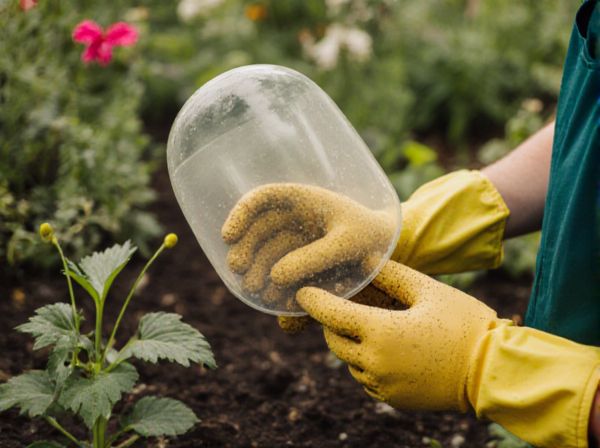
Pollen collectors vs nectar collectors Illustration
Pollen collectors gather pollen grains from flowers, storing the protein-rich substance on specialized body parts like hairy legs or pollen baskets for nourishment and hive use. Nectar collectors extract sugary nectar using their proboscis, converting it into honey through enzymatic processes within the hive. Both roles are vital for pollination and sustaining the colony's energy needs.
Table of Comparison
| Feature | Pollen Collectors | Nectar Collectors |
|---|---|---|
| Primary Resource | Pollen | Nectar |
| Function | Gather pollen for protein and nest provision | Collect nectar as energy source (carbohydrates) |
| Body Adaptations | Specialized pollen baskets (corbiculae), hairy legs | Long proboscis for accessing nectar |
| Pollination Role | Effective pollinators via pollen transfer | Indirect contribution by feeding on nectar |
| Species Examples | Honeybees, bumblebees | Butterflies, hummingbirds |
| Activity Time | Daytime active collectors | Daytime and some nocturnal species |
Understanding Pollinators: Pollen Collectors vs Nectar Collectors
Pollen collectors actively gather and transport pollen grains for either feeding larvae or pollination, playing a crucial role in plant reproduction by enabling cross-pollination. Nectar collectors primarily seek nectar as an energy source, fueling their flight and foraging activities, often aiding pollination incidentally. Understanding the distinct behaviors and ecological roles of pollen and nectar collectors enhances our ability to support pollinator diversity and ecosystem health.
Key Differences Between Pollen and Nectar Collectors
Pollen collectors, primarily bees, gather pollen grains that serve as a protein source for their larvae, exhibiting specialized body structures like branched hairs to trap pollen effectively. Nectar collectors focus on extracting nectar, a sugary liquid, which provides immediate energy through carbohydrates and influences flower pollination by transferring pollen as they feed. Key differences include the type of resource collected--protein-rich pollen versus carbohydrate-rich nectar--and the specific adaptations in morphology and behavior that optimize their respective foraging strategies.
The Role of Pollen Collectors in Garden Ecosystems
Pollen collectors play a crucial role in garden ecosystems by actively gathering pollen from flowers, which promotes effective cross-pollination and enhances plant reproduction. These pollinators, such as certain bee species, transfer significant amounts of pollen between flowers, increasing genetic diversity and crop yields. Their activity supports biodiversity and helps sustain healthy garden environments by ensuring the pollination of both wild and cultivated plants.
How Nectar Collectors Support Pollination
Nectar collectors enhance pollination by transferring pollen grains as they move between flowers to gather nectar, facilitating cross-pollination crucial for plant reproduction. Unlike pollen collectors, which intentionally collect pollen, nectar collectors inadvertently pick up pollen on their bodies, increasing genetic diversity in flowering plants. Their role is vital in ecosystems where nectar foragers, such as bees and butterflies, serve as primary pollinators supporting agricultural productivity and biodiversity.
Common Garden Species: Pollen Collectors
Pollen collectors, such as honeybees and bumblebees, play a vital role in pollinating common garden species like sunflowers, dandelions, and clover by actively gathering pollen as a protein source for their larvae. These pollinators exhibit specialized behaviors and morphological adaptations, including branched body hairs for efficient pollen transport. Unlike nectar collectors that primarily seek sugar-rich nectar, pollen collectors directly contribute to cross-pollination by transferring pollen grains between flowers, enhancing garden biodiversity and plant reproduction.
Common Garden Species: Nectar Collectors
Nectar collectors such as honeybees (Apis mellifera) and bumblebees (Bombus spp.) play a crucial role in pollinating common garden species including lavender (Lavandula angustifolia) and coneflower (Echinacea purpurea). These pollinators efficiently transfer pollen while foraging for nectar, facilitating plant reproduction and increasing seed set. Their preference for tubular flowers with abundant nectar rewards supports the growth of diverse garden ecosystems.
Attracting Pollen Collectors to Your Garden
Pollen collectors like bees and beetles are vital for effective pollination, requiring specific garden plants rich in pollen such as sunflowers, dandelions, and daisies to attract them. Incorporating diverse native flowering plants that produce abundant pollen at various blooming periods ensures sustained pollen availability and supports these essential pollinators. Providing shallow water sources and reducing pesticide use further enhances the habitat, encouraging pollen collectors to thrive and improve overall garden pollination.
Encouraging Nectar Collectors for Better Pollination
Encouraging nectar collectors such as bees and butterflies enhances pollination efficiency by promoting frequent flower visits and cross-pollination, which increases genetic diversity in plants. Nectar collectors carry pollen more evenly on their bodies compared to pollen collectors, whose specialized adaptations often result in less effective pollen transfer. Supporting habitats rich in nectar sources nurtures a diverse pollinator community, ultimately improving fruit and seed set in agricultural and natural ecosystems.
Plant Choices for Supporting Different Pollinator Types
Pollen collectors such as bees prefer plants with abundant, accessible pollen like sunflowers and dandelions, which provide essential protein for brood development. Nectar collectors, including butterflies and hummingbirds, are drawn to flowers with deep, tubular shapes such as trumpet vines and bee balms that offer rich nectar rewards. Designing gardens with a diverse array of pollen- and nectar-producing plants supports a wider range of pollinator species, enhancing ecosystem health and pollination efficiency.
Maximizing Pollination: Balancing Pollen and Nectar Collectors
Maximizing pollination requires balancing the roles of pollen collectors and nectar collectors, as pollen collectors directly transfer pollen grains between flowers, enhancing fertilization rates. Nectar collectors stimulate flower visits often without heavy pollen loads, increasing cross-pollination opportunities and genetic diversity. Maintaining diverse pollinator populations ensures optimal pollen transfer efficiency and sustained ecosystem health.
Pollen collectors vs nectar collectors Infographic

 gardendif.com
gardendif.com